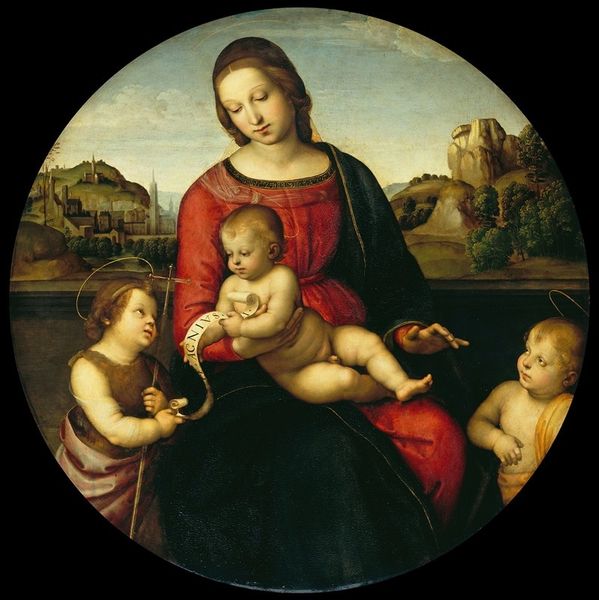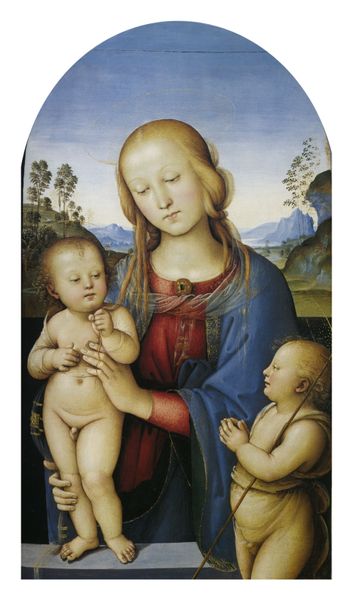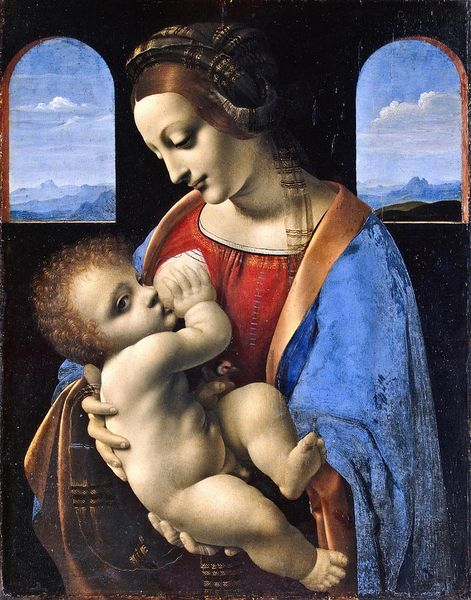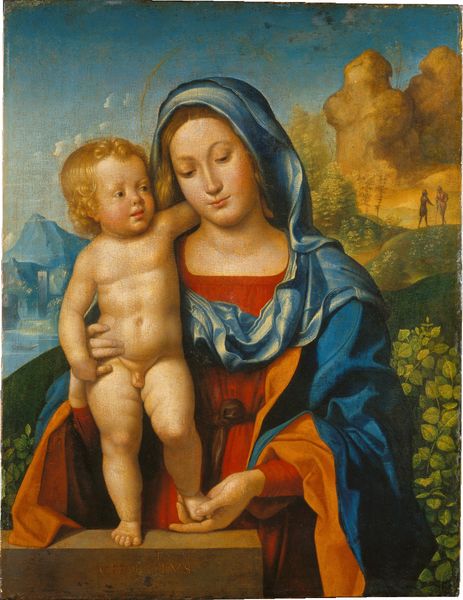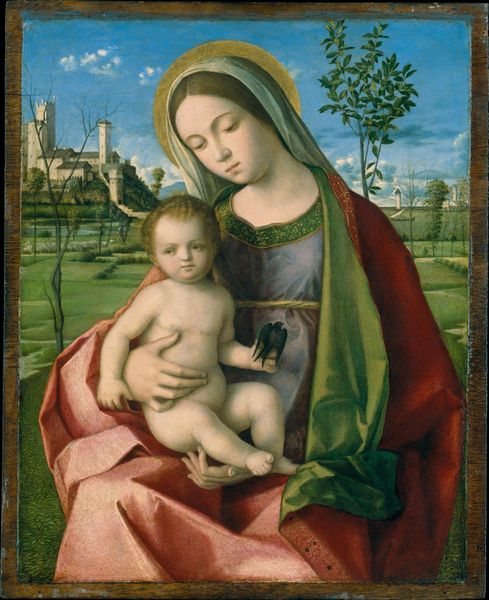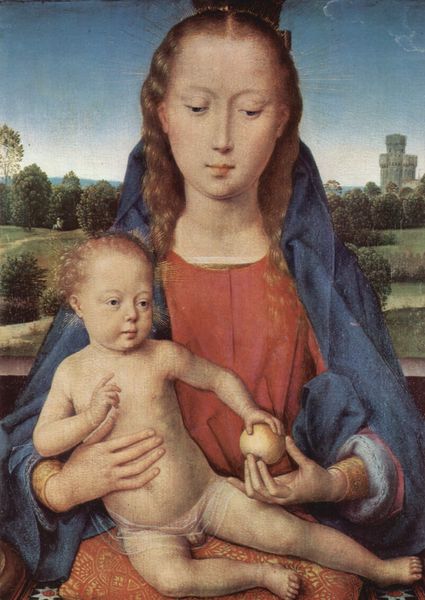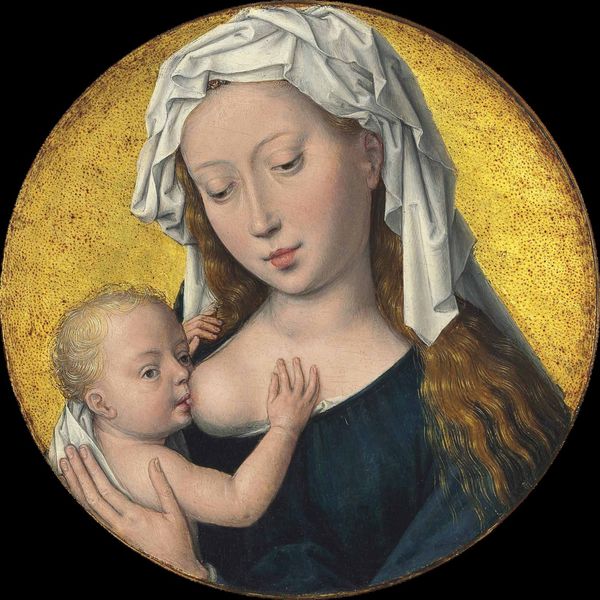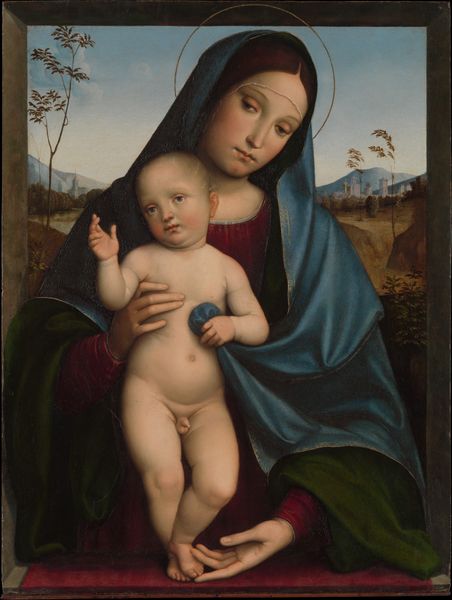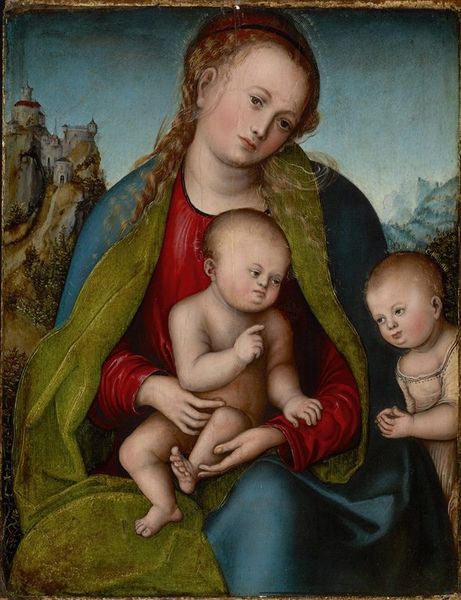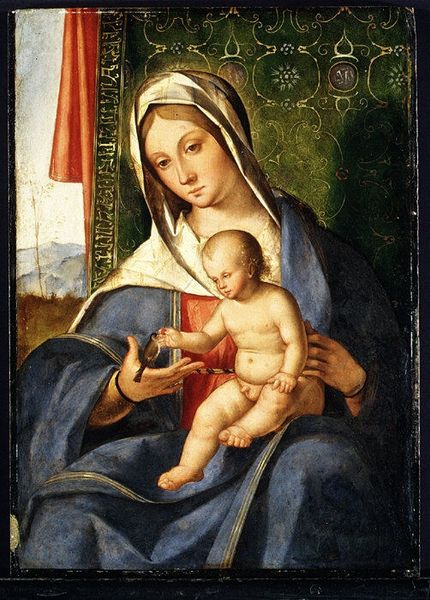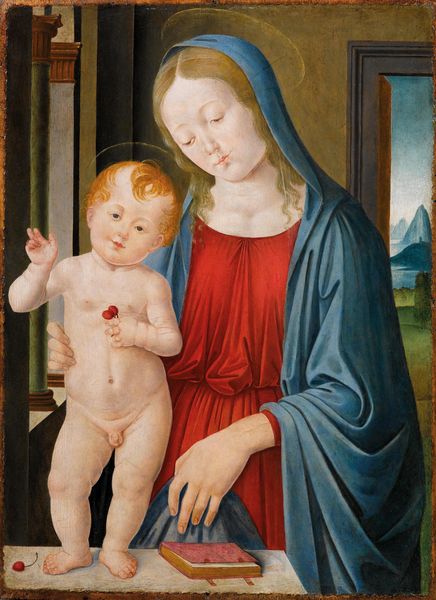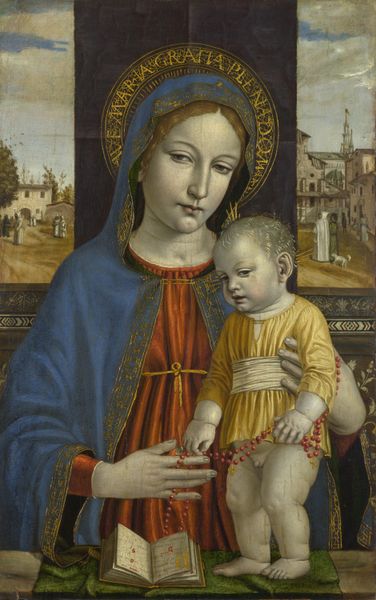
painting, oil-paint
#
portrait
#
high-renaissance
#
painting
#
oil-paint
#
oil painting
#
italian-renaissance
#
miniature
Dimensions: 17.5 x 18 cm
Copyright: Public domain
Editor: So, this is Raphael's "The Madonna Conestabile," painted around 1502, using oil paint. There's a quiet tenderness about it, don't you think? Mother and child in a serene landscape, both gazing at this small book. What do you see in this piece, beyond its obvious beauty? Curator: The painting certainly exudes beauty, but I see something deeper: a dialogue about knowledge, power, and the socially constructed roles of women in the early 16th century. Look at Mary. She isn't simply a passive vessel. She presents the book – a symbol of scripture and learning – to the child. How does that challenge, or perhaps reinforce, our understanding of female education at that time? Editor: That's a perspective I hadn’t considered! So you're suggesting the book isn't just a religious symbol, but something more radical? Curator: Exactly. The Renaissance was seeing the stirrings of humanist thought, but the education and roles available to women were still extremely limited by patriarchal social structure. Raphael, perhaps subtly, poses questions about those limitations. Is he critiquing or upholding tradition? The serene gaze suggests acceptance, yet the act itself signifies knowledge transfer. Editor: I see what you mean. It is much more nuanced than just a simple depiction of mother and child. So much of the Renaissance revolved around the tension between established order and burgeoning new ideas. Curator: Precisely! It reflects an ongoing negotiation for social reform during that period. Editor: Thank you; viewing art as an act of challenging power structures opens a new avenue for studying pieces such as this one!
Comments
No comments
Be the first to comment and join the conversation on the ultimate creative platform.
